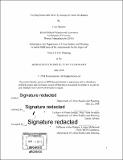| dc.contributor.advisor | Mary Anne Ocampo. | en_US |
| dc.contributor.author | Spetrini, Evan | en_US |
| dc.contributor.other | Massachusetts Institute of Technology. Department of Urban Studies and Planning. | en_US |
| dc.coverage.spatial | n-us-ma | en_US |
| dc.date.accessioned | 2018-09-28T20:57:59Z | |
| dc.date.available | 2018-09-28T20:57:59Z | |
| dc.date.copyright | 2018 | en_US |
| dc.date.issued | 2018 | en_US |
| dc.identifier.uri | http://hdl.handle.net/1721.1/118233 | |
| dc.description | Thesis: M.C.P., Massachusetts Institute of Technology, Department of Urban Studies and Planning, 2018. | en_US |
| dc.description | Cataloged from PDF version of thesis. | en_US |
| dc.description | Includes bibliographical references (pages 90-93). | en_US |
| dc.description.abstract | Artists are often viewed as the precursor to gentrification, and it is true that artists tend to move into neglected parts of the city where rents are cheap and regulations are lax, typically in industrially zoned districts. When this happens, real estate values typically rise over time, pushing out the previous residents, and often the artists themselves. Planners have used land use regulatory tools to encourage artists to locate in certain areas for the purpose of urban revitalization but little has been said on what to do when the cycle completes itself and artists are priced out of the areas they had helped to revitalize. Somerville, Massachusetts is one of a few municipalities that has attempted to use zoning as a tool to protect and promote the development of artist workspaces in a high value real estate market. This thesis explores four major zoning techniques that the City has used to support artist spaces: relaxing use regulations, providing incentives through density bonuses, mandating a percentage of artist space in new developments, and separating uses to limit real estate competition. Through case study analysis, this thesis shows that even though artist workspaces have often existed in fringe areas of the city, the trend of physical isolation is unsustainable in growing, land-constrained cities. Moving forward, artist workspaces must adapt to serve a variety of users and fulfill both the consumption and production aspects of artist spaces. Using these findings as a baseline, this research seeks to evaluate and improve Somerville's zoning code by utilizing these four techniques in order to protect existing studios and promote the development of forward-looking artist workspaces. | en_US |
| dc.description.statementofresponsibility | by Evan Spetrini. | en_US |
| dc.format.extent | 117 pages | en_US |
| dc.language.iso | eng | en_US |
| dc.publisher | Massachusetts Institute of Technology | en_US |
| dc.rights | MIT theses are protected by copyright. They may be viewed, downloaded, or printed from this source but further reproduction or distribution in any format is prohibited without written permission. | en_US |
| dc.rights.uri | http://dspace.mit.edu/handle/1721.1/7582 | en_US |
| dc.subject | Urban Studies and Planning. | en_US |
| dc.title | Keeping Somerville weird by zoning for artist workspace | en_US |
| dc.type | Thesis | en_US |
| dc.description.degree | M.C.P. | en_US |
| dc.contributor.department | Massachusetts Institute of Technology. Department of Urban Studies and Planning | |
| dc.identifier.oclc | 1053888723 | en_US |
